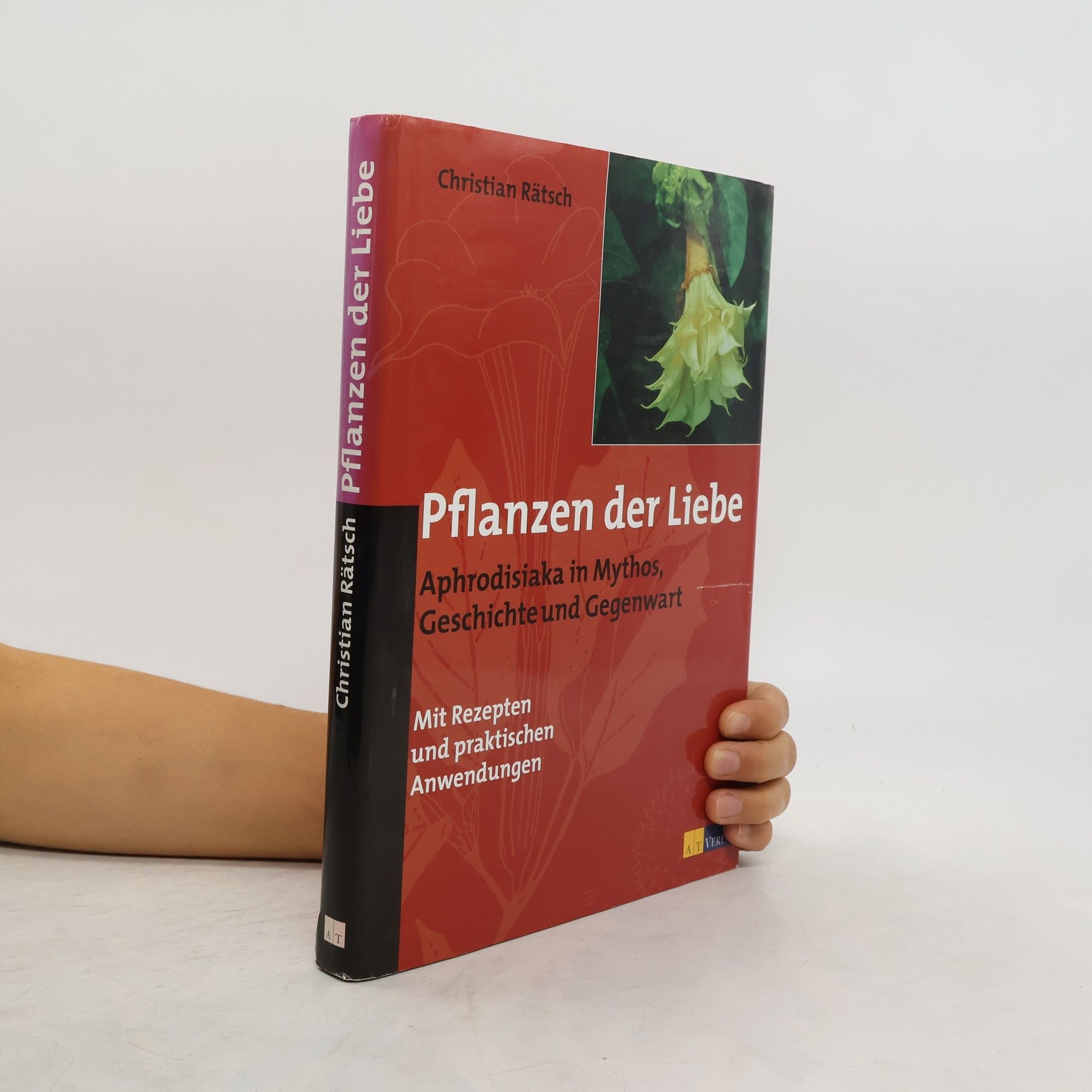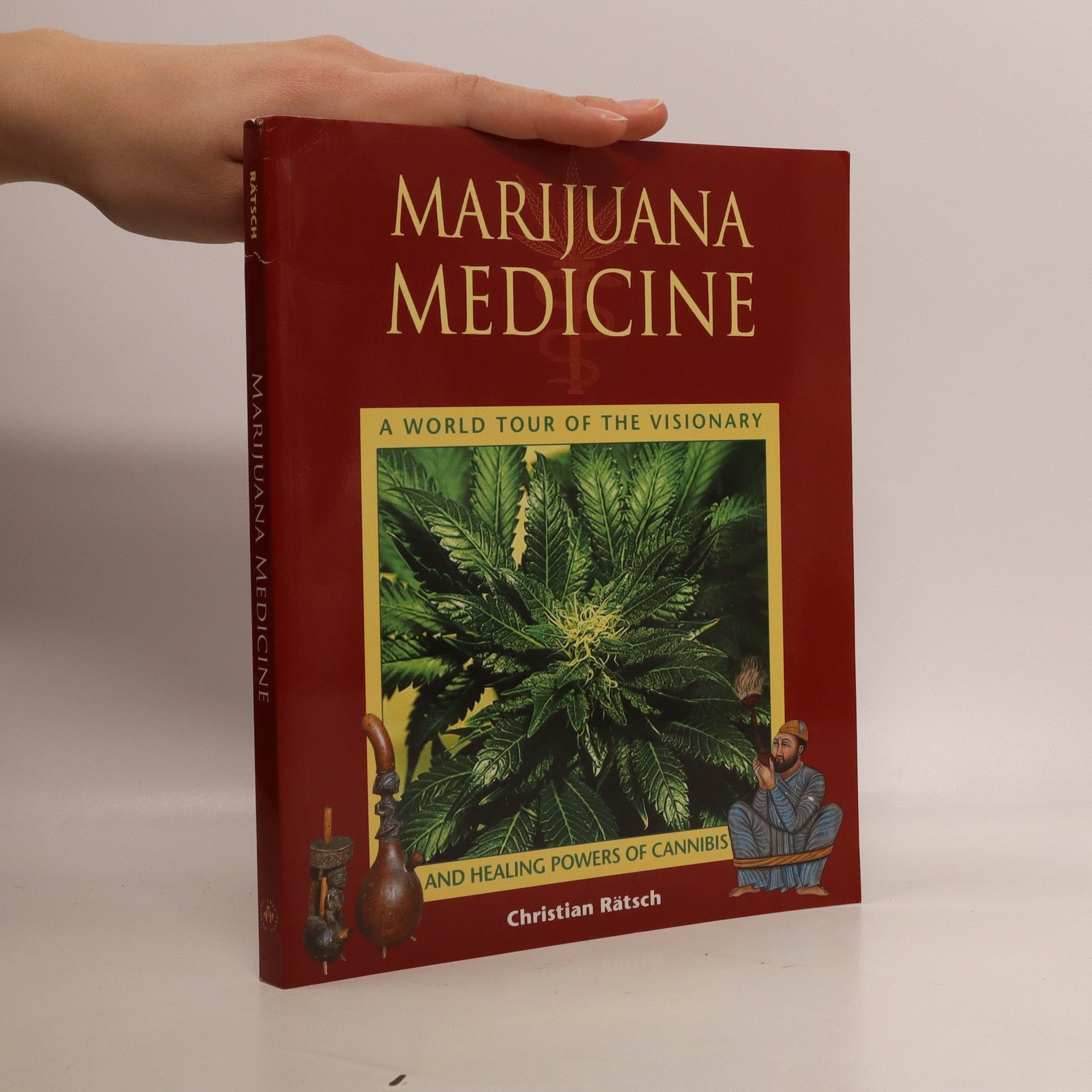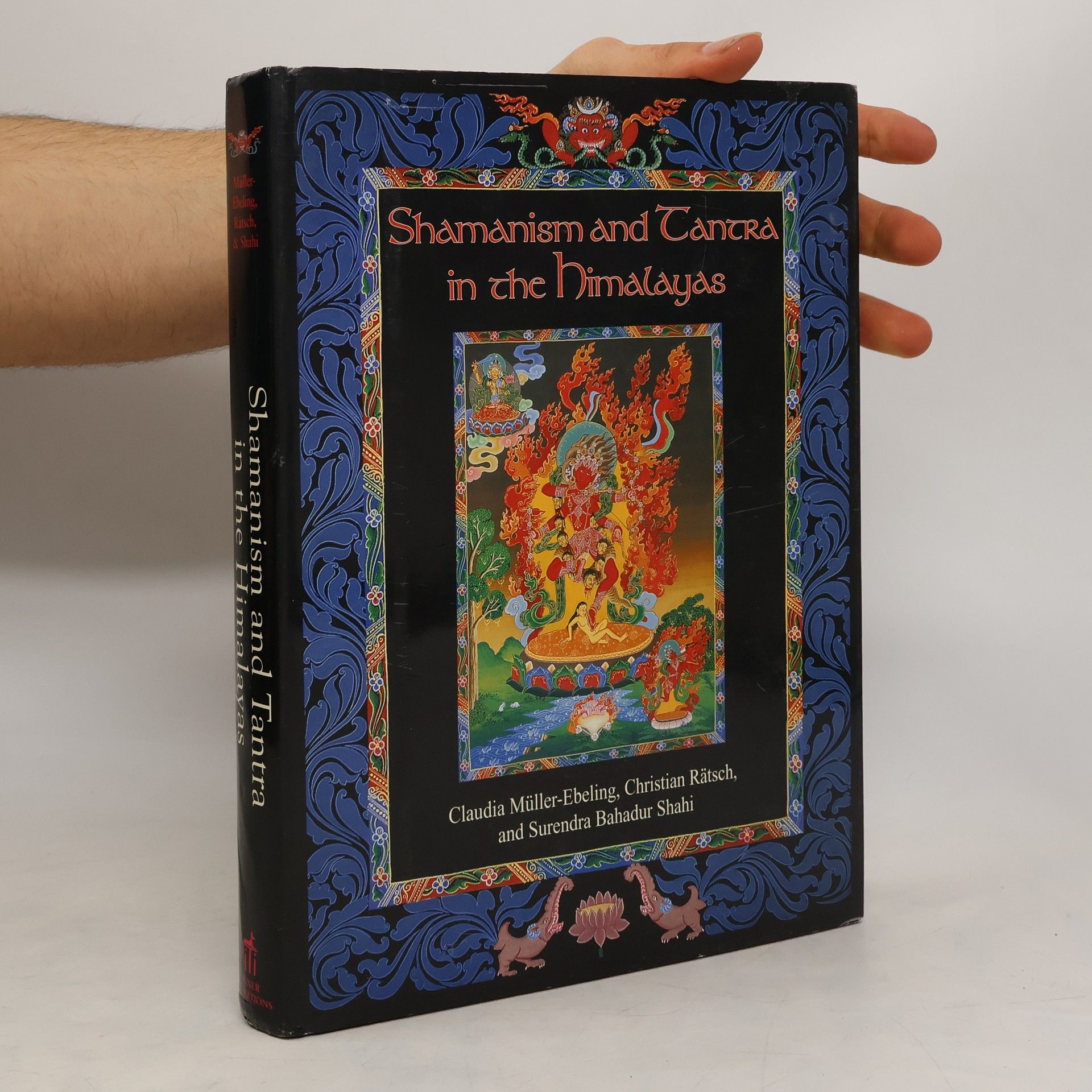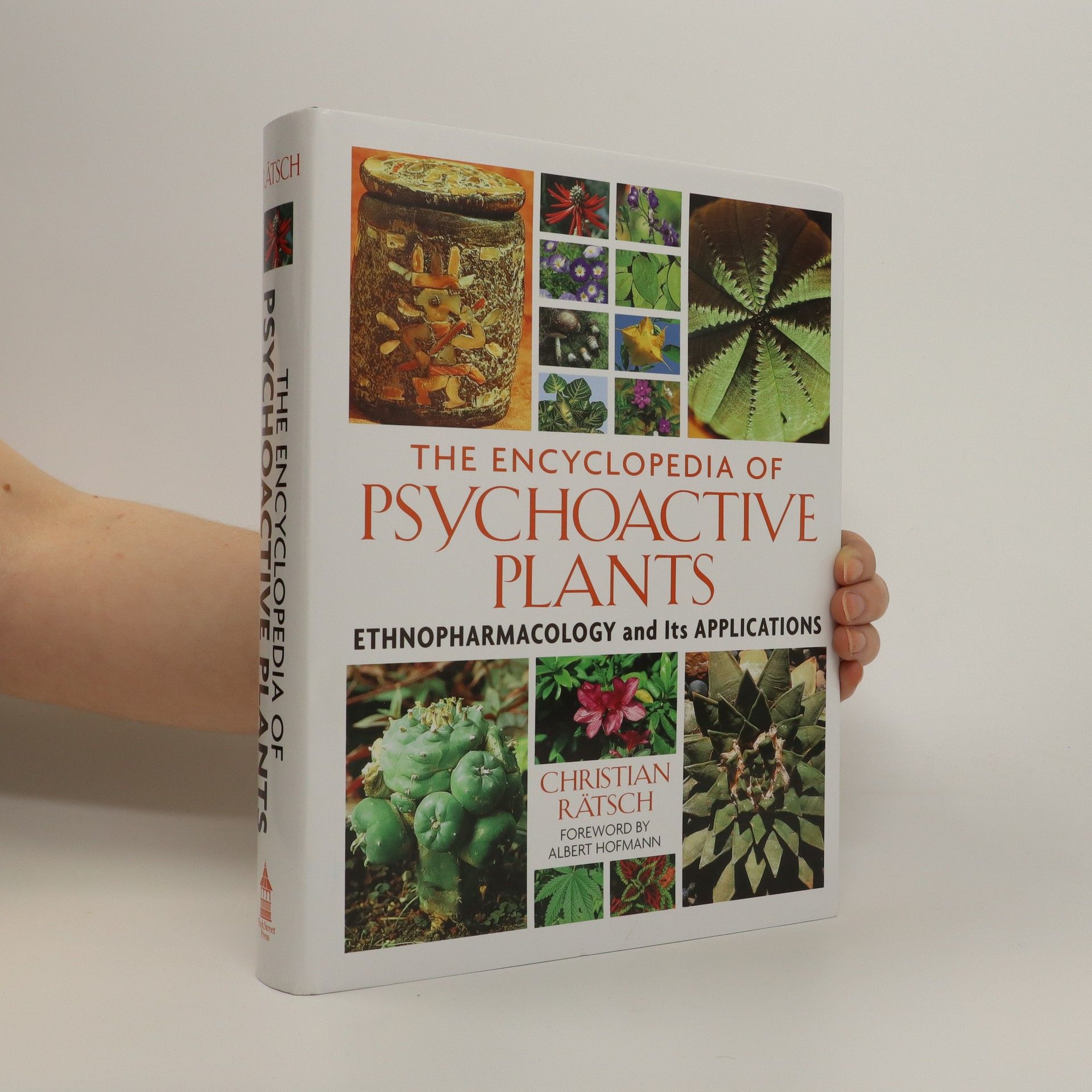Pilze dienen und dienten als Nahrungs- und Genussmittel, als Medizin und Heilmittel, als Zunder zur Feuererzeugung, als Zauberpilze für schamanische Rituale, als Inspiration für Literatur und Kunst, doch an ihnen scheiden sich Geister und Kulturen: Sie werden entweder geschätzt und als nützlich angesehen, oder aber gefürchtet und mit Giftmord, Tod und Grauen assoziiert. Nach dem Begründer der modernen Mykologie, R. Gordon Wasson, lassen sich die verschiedenen menschlichen Kulturen als mykophil, «pilzliebend», oder mykophob, «pilzhassend», einordnen. So gibt es Kulturen, die Pilze hoch schätzen und sie verbreitet als Nahrung, Medizin und Rauschmittel verwenden, während andere Kulturen die Pilze meiden, sie mit Angst und Argwohn betrachten und ihnen jeden Nutzwert absprechen. Der international renommierte Ethnopharmakologe Christian Rätsch erzählt in diesem Buch auf anschauliche Weise, begleitet von vielen seltenen Abbildungen, aus der Geschichte der Ethnomykologie und stellt die weltweiten kulturellen Verwendungen von Pilzen vor.
Christian Rätsch Book order







- 2023
- 2023
Ein Kosmos im Regenwald.
Mythen und Visionen der Lakandonen-Indianer.
- 2023
Maria Sabina - Botin der heiligen Pilze
Vom traditionellen Schamanentum zur weltweiten Pilzkultur
Neuausgabe des Klassikers über den psychedelischen Pilzkult in Mexiko. Maria Sabina, die Botin der heiligen Pilze, war eine Schamanin und Heilerin aus dem mexikanischen Indianervolk der Mazateken. Sie lüftete in den fünfziger Jahren das Geheimnis der heiligen Pilze Mexikos. R. Gordon Wasson, ein Bankier aus New York, wurde von ihr – als erster Weißer – in die Welt der psychedelischen oder entheogenen Zauberpilze eingeführt. Im ersten Teil des Buches erzählt Maria Sabina ihre Lebensgeschichte. Sie berichtet von den geheimen Heilritualen, von ihrer Begegnung mit den Weißen und ihrem Heimatort Huautla im Bergland von Oaxaca. Im zweiten Teil finden sich Artikel von Wissenschaftlern und Forschern. Neben persönlichen Erinnerungen an die Schamanin werden indigene und moderne Pilzrituale vorgestellt. Erkenntnisse aus Mykologie, Chemie und Pharmakologie sowie Berichte über den Einsatz von Pilzwirkstoffen in der Psychotherapie runden dieses den Pilzen würdige Buch ab. Erstmals erschienen 1996 als Geschenk zum 90. Geburtstag von Albert Hofmann, dem Entdecker der Pilzwirkstoffe Psilocin und Psilocybin.
- 2023
Das Tor zu inneren Räumen. Heilige Pflanzen und psychedelische Substanzen als Quelle spiritueller Inspiration
Eine Festschrift zu Ehren von Albert Hofmann
In der pharmakologischen Bewusstseinsforschung wurde festgestellt, dass Menschen, außer den Grundbedürfnissen nach Essen, Trinken und Sex, auch ein geistiges Bedürfnis nach zeitlich begrenzten Veränderungen des alltäglichen Bewusstseins haben. Es gibt viele Methoden zur Bewusstseinsveränderung, darunter auch den jahrtausendealten Gebrauch psychedelischer, d. h. »bewusstseinsoffenbarender« Substanzen und Pflanzen, die in der menschlichen Geschichte eine viel wichtigere Rolle gespielt haben, als allgemein bekannt ist. Ihre Verwendung war in Rituale eingebunden, die transpersonale Erfahrungen mystischer und spiritueller Art hervorriefen. Als Festschrift für den Chemiker Albert Hofmann, der nicht nur das LSD entdeckte, sondern auch für seine Forschungen mit psychoaktiven Pflanzen und die Synthese der aktiven Wirkstoffe von Heilpflanzen mehrfach ausgezeichnet wurde, hat Christian Rätsch (1957–2022) diesen Band zusammengestellt. Hier finden sich Beiträge über psychologische, ethnologische, neurophysiologische und medizinische Erkenntnisse zu psychedelischen Pflanzen und Substanzen und Texten von Terence McKenna, Hanscarl Leuner, Stanislav Grof, Claudio Naranjo und weiteren. Überarbeitete Neuausgabe zum 80. Jahrestag der Entdeckung der psychotropen Eigenschaften des LSD und im Gedenken an Christian Rätsch
- 2022
Der zweite Band der »Enzyklopädie der psychoaktiven Pflanzen« erweitert das Standardwerk zur psychotropen Ethnobotanik mit über 500 neuen Pflanzen, Pilzen und Bakterien sowie neuen Forschungen. Er bietet zudem eine Kulturgeschichte der psychoaktiven Gewächse und deren Einfluss auf Kunst, Musik und Literatur. Ein unverzichtbares Werk für Interessierte.
- 2021
Schamanismus und Tantra in Nepal
Heilmethoden, Thankas und Rituale aus dem Himalaya
- 320 pages
- 12 hours of reading
Schamanismus und tantrische Techniken sind in Nepal einzigartig erhalten geblieben, was in diesem Buch umfassend dokumentiert wird. Die Autoren, Dr. Christian Rätsch und Dr. Claudia Müller-Ebeling, präsentieren Ergebnisse ihrer 18-jährigen Feldforschung und bieten Einblicke in die Traditionen nepalesischer Volksgruppen. Reich illustriert mit hochwertigen Thankas und unpublizierten Fotos von Heilungszeremonien, enthält das Werk auch originale Rezepturen und beschreibt über zwanzig psychoaktive Pflanzen, deren Nutzung durch Schamanen bisher unerforscht blieb.
- 2019
Die Königin von Saba wird gerne mit orientalischer Pracht, exotischen Wohlgerüchen, üppiger Sinnlichkeit und allen Verlockungen des alten Orients in Verbindung gebracht. Im antiken Land Saba, im heutigen südlichen Jemen und in der Provinz Dhofar des Oman, blüht der Handel mit Räucherstoffen, Duftölen und Parfüms bis heute, und er liegt ausschliesslich in der Hand von Frauen. Der orientalische Gebrauch von Räucherwerk ist ein traditionelles Kulturgut aus vorislamischen Zeiten, das auf die heidnischen Araber zurückgeht. Die heidnischen Kulturelemente, die bis heute überlebt haben, zeigen sogar eine Verbindung bis in den paläolithischen Schamanismus. In diesem Buch werden die wichtigsten Räucherstoffe, die im Orient traditionell benutzt werden, in ausführlichen Monografien dargestellt. Abgerundet wird das Buch durch einleitende Kapitel zur Räucherkultur, viele Rezepte für Räucherrituale und persönliche Erlebnisse mit orientalischem Räucherwerk.
- 2019
Heidnische Weihnachten
Bräuche, Riten, Rituale
Genau genommen ist Weihnachten ein heidnisches Fest, überlagert von spätantiken, altorientalischen und katholisch-liturgischen Bräuchen. Es ist das Fest der Wiedergeburt der Sonne, der Raunächte, des Jahreswechsels, der Götter und Geister. In den Weihnachtsbräuchen tauchen, bunt gemischt, heimische wie exotische Pflanzen auf, Gewürze aus dem Orient und aus der Neuen Welt, orientalisches und nordisches Räucherwerk, Nord- und Südfrüchte, Blumen und Ziergewächse aus dem Regenwald, der Wüste, dem Gebirge. Die Mythologie der typischen Weihnachtspflanzen führt zu den Ursprüngen der Kultur im Schamanismus, zur heiligen Botanik der Alten, zu den mittelalterlichen Bräuchen, zu Hexenzauber, Dämonenbannung, Fruchtbarkeits- und Opferriten. Mit vielen Rezepten für Räucherungen, Knastermischungen, Spezereien und Trünke.
- 2018
Das umfassende Standardwerk bietet eine systematische Erschließung psychoaktiver Pflanzen und enthält Monografien mit Informationen zu Botanik, Aussehen, Anbau, Zubereitung, Dosierung, Geschichte, medizinischen Verwendungen und Vorschriften. Alle Pflanzen sind bildlich dargestellt und es ist ein unverzichtbares Werk für Interessierte.
- 2017
Christian Rätsch ist medienweit als Ethnopharmakologe, Ethnobotaniker und Drogenexperte bekannt; als Altamerikanist, Regenwaldforscher, Maya-Kenner, Aphrodisiakaspezialist und sogar als Richard-Wagner-Enthusiast. Und natürlich als „Der Rätsch“. Die kiloschwere, 1998 im Schweizer AT-Verlag veröffentlichte Enzyklopädie der psychoaktiven Pflanzen gilt als Standardwerk. Erstmals erhellt dieser Bildband vom Schweizer Nachtschatten-Verlag nun eine gänzlich unbekannte kreative Seite von Christian Rätsch. Nur wenige sahen seine präzise ins Bild gebannten (unverkäuflichen) Visionen in flirrenden Farben. Sechzig ausgewählte Bilder (von 1970 bis heute) bieten Einblicke in seine Seelenlandschaften und dokumentieren wesentliche Themen seines Forscherdrangs. Von der germanischen Mythologie bis zu den Maya; von der Steinzeit bis zu den Pflanzen der Götter, Göttinnen und Schamanen. Eine Festschrift aus dem prallen Leben – mit Erinnerungen von Wegbegleitern und KollegInnen.

